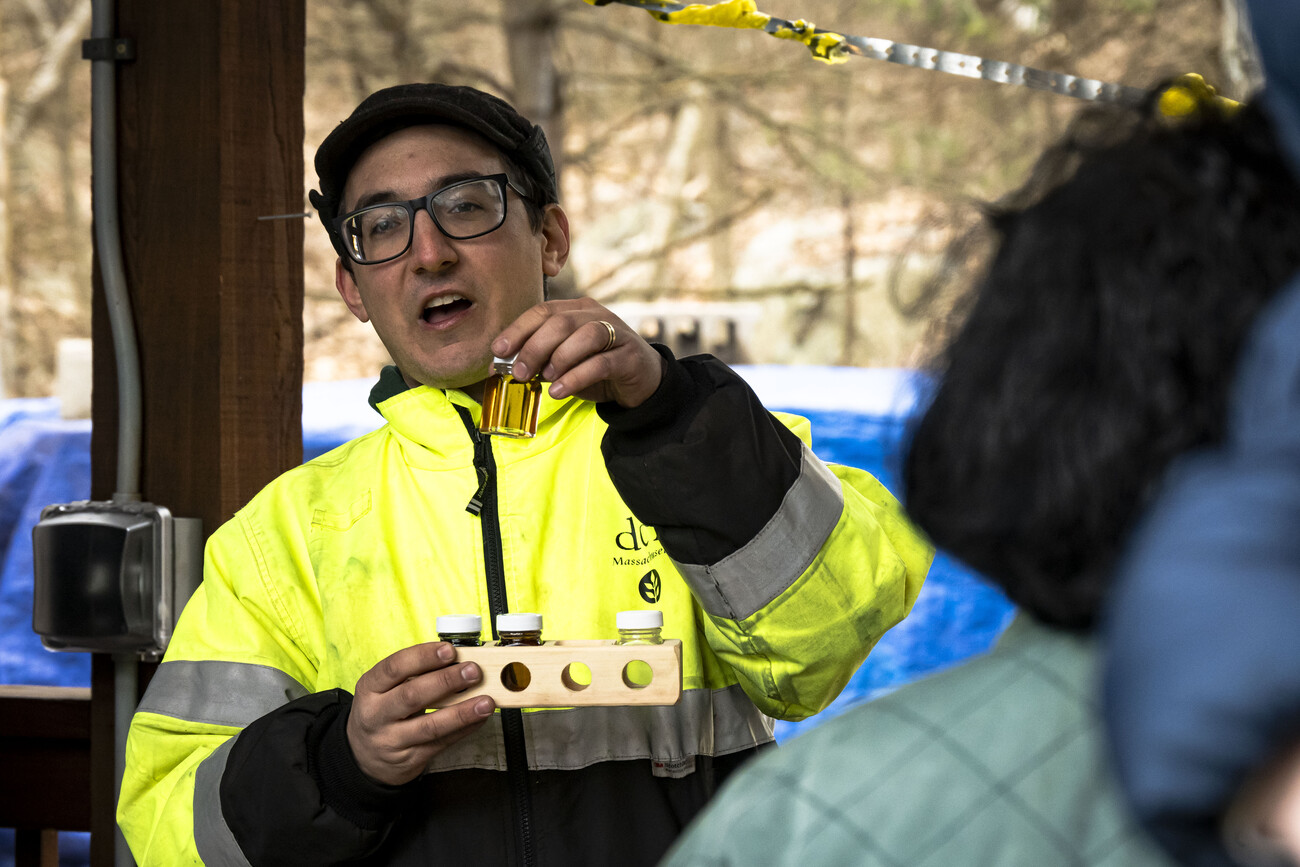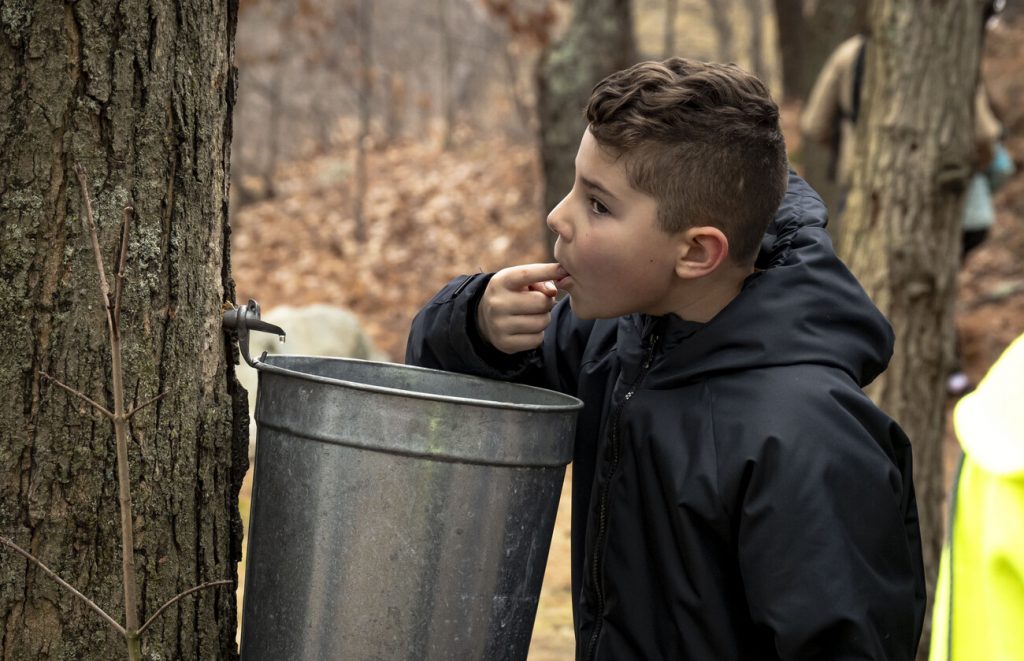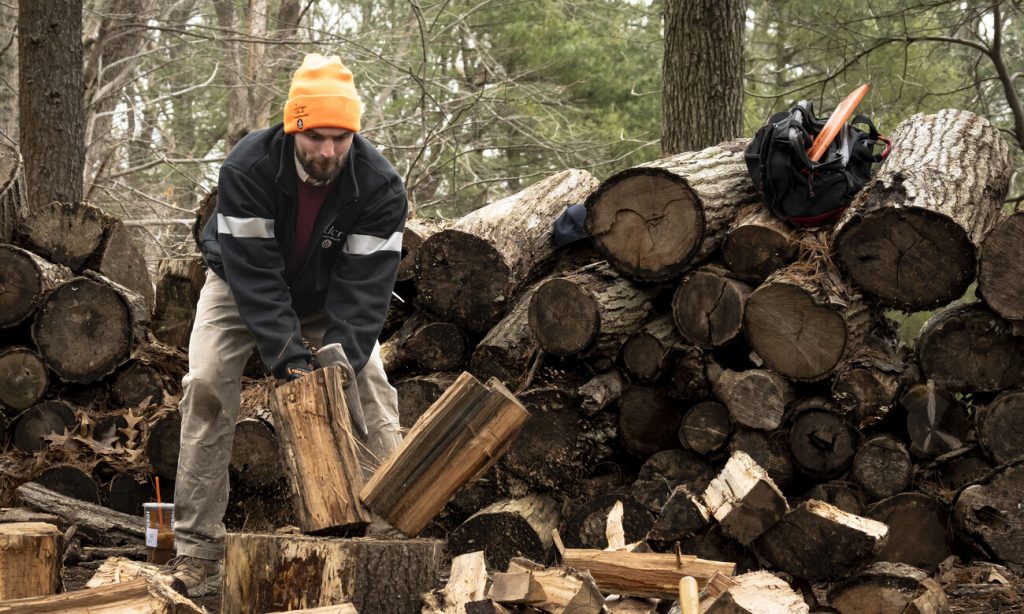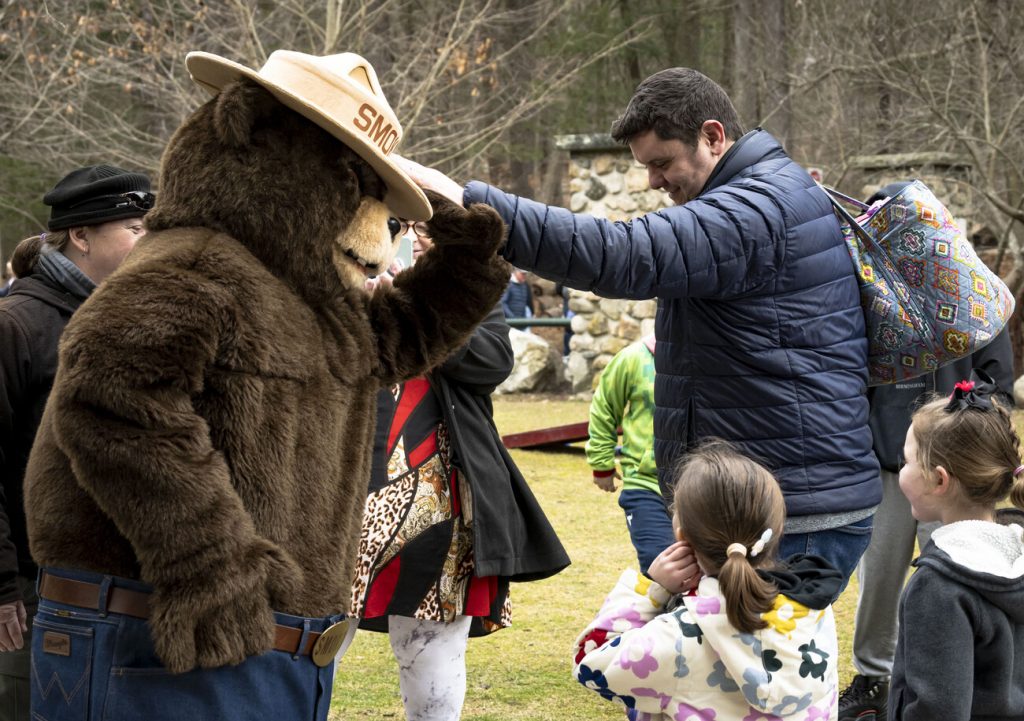

SAUGUS — Breakheart Reservation has held an annual program teaching about the history and production of maple syrup since 1988. This year, though, workers at the park started tapping for sap to produce syrup earlier than they ever have before.
Tapping maple trees requires 32-degree nights and 40-degree days to allow for the sap to flow. Due to the effects of climate change, the park was able to collect sap, which gets evaporated into syrup and given away at the park for educational purposes, for five or six weeks this year.
“Every year we kind of roll the dice with it, and we see what the weather is going to do for us,” Breakheart Visitor Services Supervisor Jessica Narog-Hutton said. “This year, we got really, really lucky and we had a really good year for collecting. It’s just based on the weather, and we can’t control that yet.”
Narog-Hutton said that Maple Sugarin’, the annual program at Breakheart that was held Saturday, started while the park was being revitalized in the 1980s. She said that Josh Cline, who worked at the park then, was key in making Breakheart a welcoming community space back then.
Breakheart was the first park in the state to have a maple sugaring program, she said, and Maple Sugarin’ remains an important attraction.
“We want to keep people coming to the park and seeing what grows here,” Narog-Hutton said.
Saturday, she was at one of the four stations set up for the program teaching how to identify sugar maples, the best tree from which to collect sap. Because the collection is done in the winter, tappers can’t rely on the shape of leaves.
Instead, they look for grayish, wrinkled bark, branches that alternate like a ladder, and — the most important tell — three buds on the crown of each branch.
Then, they have to drill a 2-inch hole in the tree. If the tree has been tapped before, the new hole has to be at least six inches away from the old one. Once that is done, a spile is attached to the hole and the sap starts to flow.
“It’s watery, but it’s got a little bit of that maple taste to it,” Narog-Hutton said. “That’s why it takes 40 gallons of sap to make 1 gallon of syrup — to boil it down and get all that sugar.”

Park Supervisor Brett Power showed how to use an evaporator to extract the syrup. All of the sap is put on a pan and brought to a boil.
The sap is about 2% sugar, and it gets boiled until it’s at around 67%, before being finished on a burner for better temperature control.
“The different colors all have to do with the time of year when you collected the sap,” Power said. The darker the syrup is, the later in the season it was collected. Back in the day lighter syrup was more valued, because it was just used as a substitute for sugar.
All of this evaporation takes a lot of wood to burn, and Tyler Morelli, a park supervisor, gave a demonstration of how to chop it.
Historically, an ax and two-person saw was used. Now, though, they have been replaced by a hydraulic press and chainsaw, respectively.

“A cord of wood will burn 800 gallons of sap, that turns to around 40 gallons of syrup,” Morelli said.
He added that they don’t chop down any trees at the park for the wood, and that it is all from trees that have come down from recent storms and wildfires.
The way wood is chopped isn’t the only thing that has changed over the years. Matthew Nash, a park interpreter for the Department of Conservation and Recreation, explained the history of the process.
He said that Native Americans would cut slashes into the trees with tomahawks, causing the sap to flow into hollowed logs. While this killed the tree, the area was heavily forested at the time, so it didn’t make a huge difference.
Europeans observing this, however, were chopping down many trees to build houses and create tools, and killing trees for syrup was less sustainable. So instead, they figured out they could tap the trees instead.
“It was kind of correcting a problem they had created,” Nash said.

24World Media does not take any responsibility of the information you see on this page. The content this page contains is from independent third-party content provider. If you have any concerns regarding the content, please free to write us here: contact@24worldmedia.com

A Brief Look at the History of Telematics and Vehicles

Tips for Helping Your Students Learn More Efficiently

How To Diagnose Common Diesel Engine Problems Like a Pro

4 Common Myths About Wildland Firefighting Debunked

Is It Possible To Modernize Off-Grid Living?

4 Advantages of Owning Your Own Dump Truck

5 Characteristics of Truth and Consequences in NM

How To Make Your Wedding More Accessible

Ensure Large-Format Printing Success With These Tips

4 Reasons To Consider an Artificial Lawn

The Importance of Industrial Bearings in Manufacturing

5 Tips for Getting Your First Product Out the Door